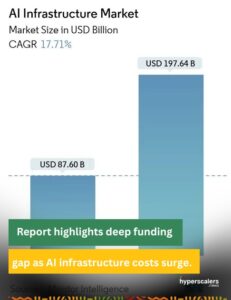
As more African businesses are migrating to the cloud to reap the benefits of
efficiency and scalability, ensuring the security of your cloud infrastructure and workloads is important. Security teams must not only enable this transition but also safeguard cloud workloads from evolving cyber threats. In this article, we
will explore key strategies to secure your cloud infrastructure and workloads, focusing on proactive measures to protect your digital assets.
- Understanding the Cloud Landscape
Before delving into specific security measures, it’s essential to have a clear understanding of the cloud landscape. Cloud computing encompasses various service models, including Infrastructure as a Service (IaaS), Platform as a Service (PaaS), and Software as a Service (SaaS). Each of these models has its unique security considerations. Therefore, tailor your security approach to match the cloud service you are using.
- Implement Strong Identity and Access Management (IAM)
Identity and Access Management (IAM) is a fundamental aspect of cloud security. Ensure that you have a robust IAM strategy in place to control access to your cloud resources. Implement principles of least privilege, enforce multi-factor authentication (MFA), and regularly review and revoke unnecessary permissions. Managing identities effectively helps prevent unauthorized access and potential data breaches.
- Encrypt Data in Transit and at Rest
Encrypting data is a fundamental practice for safeguarding sensitive information in the cloud. Encrypt data both in transit and at rest. Use Secure Sockets Layer (SSL)/Transport Layer Security (TLS) for data in transit and encryption services provided by your cloud provider to protect data at rest. This extra layer of security ensures that even if unauthorized access occurs, the data remains unreadable.
- Regularly Update and Patch
Maintaining up-to-date software and systems is crucial to cloud security. Cloud providers regularly release patches and updates to address vulnerabilities. It is your responsibility to apply these updates promptly. Automate patch management processes whenever possible to reduce the risk of human error.
- Conduct Regular Security Audits and Assessments
Regular security audits and assessments are essential for identifying vulnerabilities in your cloud environment. Use tools and services provided by your cloud provider or employ third-party solutions to scan for security issues. Conduct penetration testing to assess your cloud infrastructure’s resilience to attacks.
- Monitor and Detect Anomalies
Implement real-time monitoring and detection mechanisms to identify suspicious activities in your cloud environment. Leverage cloud-native monitoring and logging services to gain visibility into user activities, resource access, and network traffic. Set up alerts to respond swiftly to potential security incidents.
- Develop an Incident Response Plan
No security strategy is complete without an incident response plan. Prepare for the worst-case scenario by defining clear incident response procedures. Ensure that your team knows how to detect, report, and respond to security incidents effectively. Regularly test and update your incident response plan to address evolving threats.
- Educate and Train Your Team
The weakest link in cybersecurity is the human being. Whether it’s a disgruntled employee, an overconfident employee, or an employee with a lack of knowledge, cybersecurity companies must mitigate human-driven breaches by providing comprehensive cybersecurity training to team members to help them recognize phishing attempts, social engineering tactics, and other common attack vectors. Educated employees are your first line of defense against cyber threats.
- Leverage Security-as-a-Service (SECaaS) Solutions
Consider using Security-as-a-Service (SECaaS) offerings, which are specifically designed to enhance cloud security. These services provide a range of security features, including threat detection, vulnerability scanning, and data protection, helping you fortify your cloud environment.
- Stay Informed and Adapt
The cybersecurity landscape is dynamic, with new threats emerging regularly. Stay informed about the latest threats and vulnerabilities relevant to your cloud environment. Continuously adapt your security strategy to address evolving challenges.
Securing your cloud infrastructure and workloads requires a comprehensive and proactive approach. By understanding the cloud landscape, implementing strong security measures, staying vigilant, and educating your team, cloud users can harness the full potential of the cloud while safeguarding their digital assets against a constantly evolving threat landscape.





